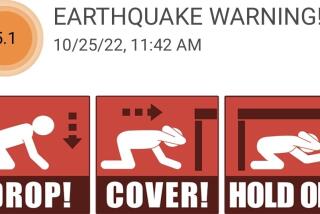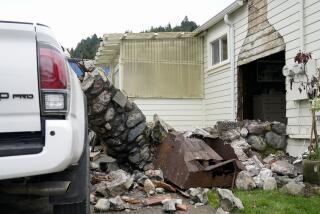Quake-Forecast Theory to Be Tested
- Share via
A Russian rocket fired a tiny satellite into orbit Monday designed to test a theory that major earthquakes are preceded by low-frequency magnetic field fluctuations, possibly allowing accurate quake prediction.
The 10-pound satellite, developed by the Palo Alto firm QuakeFinder, was built by Stanford University students. It will orbit about 500 miles from Earth, crossing both poles, for about six months.
Marijean Seelbach, head of QuakeFinder, said that initial contact was made with the satellite Monday morning after launching and that tests would be conducted for about two weeks before an attempt is made to measure magnetic fluctuations.
Some earthquake scientists have expressed doubt that the theory is valid. But Seelbach said such fluctuations had been detected before the 1989 Loma Prieta quake in Northern California.
Lucy Jones, head of the Pasadena office of the U.S. Geological Survey, has pointed out that any theory that a certain phenomenon is a sure precursor to an earthquake must be tested several ways. “Not only do we have to be sure that an earthquake invariably follows the precursor, but we have to establish each quake has such a precursor,” she has said.
Seelbach said that QuakeFinder is seeking further funding to establish seismic stations on the ground to monitor magnetic fluctuations. About $1 million was raised from private sources to develop and pay for placement of the satellite Monday, she said.
Monday’s launch from the Plesetsk Cosmodrome in Russia included a total of eight scientific satellites on a Euroekot booster. The other satellites, launched into separate orbits, are devoted to a variety of purposes.
Accurate prediction would entail precision in stating the time, place and size of quakes, and would be most useful for larger, damaging temblors. So far, government officials say, that has been accomplished only on a random coincidental basis.
More to Read
Sign up for Essential California
The most important California stories and recommendations in your inbox every morning.
You may occasionally receive promotional content from the Los Angeles Times.













